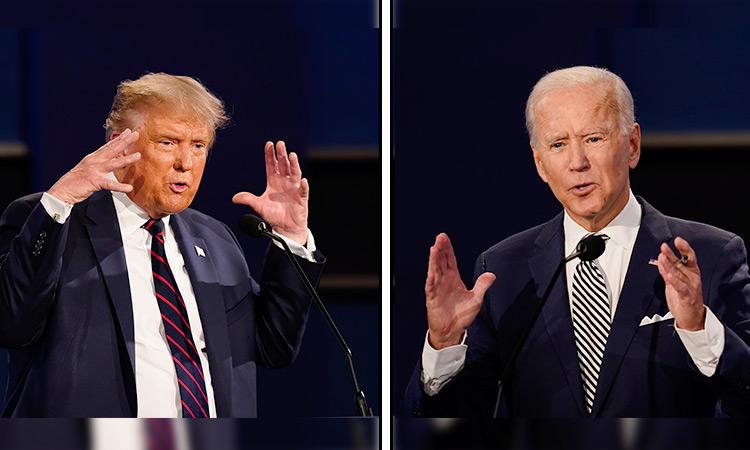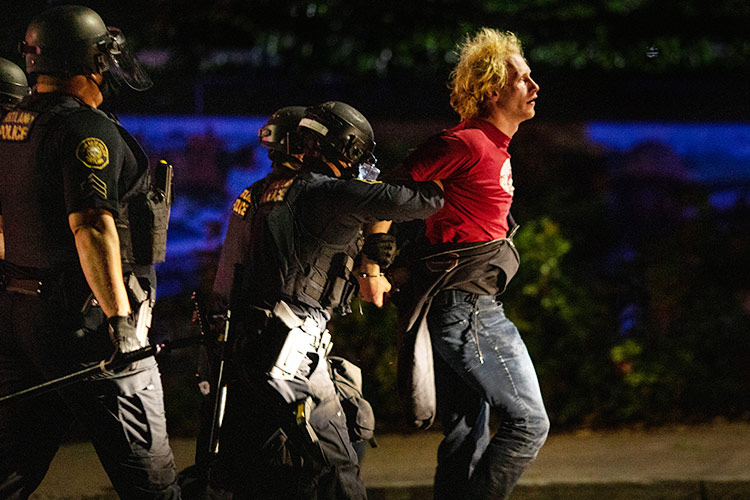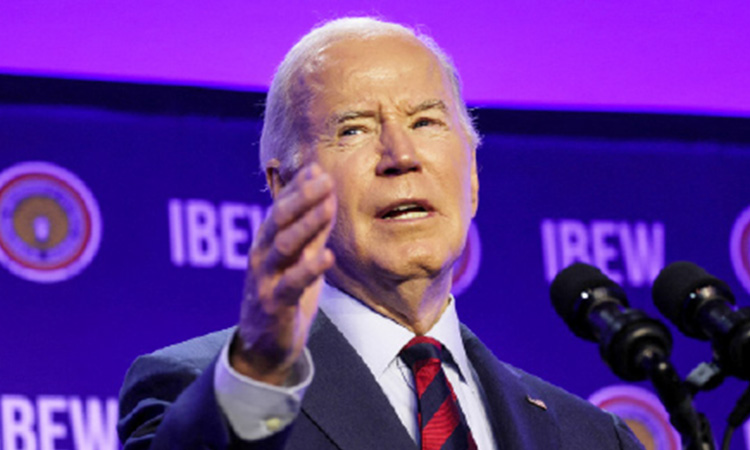Long history behind US locking up immigrants

After the arrival of Donald Trump in the White House, the US has been jailing more migrants than it did ever before.
Cesar Cuauhtemoc and Garcia Hernandez, Tribune News Service
Three years into Donald Trump’s presidency, the United States government imprisons more migrants than ever before. Given the president’s vicious rhetoric, this isn’t a surprise. But it’s also not inevitable.
Sixty-five years ago, racism was widespread, and yet the Eisenhower administration moved aggressively toward abolishing immigration prisons. That past offers important lessons for the future of US immigration policy. For decades starting in the late 19th century, the federal government operated immigration prisons where migrants were detained for days, months or even years as immigration officials decided whether they would be allowed to stay in the United States. On San Francisco Bay’s Angel Island, the “Chinese jail,” as one facility was often called, was so unsanitary that a government inspector called it a “death trap.” On the East Coast, one woman detained on Ellis Island’s immigration prison wrote that it reminded her of “a group of kennels.”
Imprisoning migrants was a firm part of immigration policing, but in November 1954, Eisenhower’s Attorney General Herbert Brownell Jr., presiding over a naturalisation ceremony at New York’s Ebbets Field, announced a new approach. Overlooking the crowd of people ready to swear their allegiance to the United States as new citizens, Brownell praised a “step forward toward humane administration of the Immigration laws” by the commissioner of the Immigration and Naturalization Service, Joseph Swing.
“In all but a few cases, those aliens whose admissibility or deportation is under study will no longer be detained,” Brownell explained. As a result of this policy shift, the government shut down six immigration prisons. A few years later, the US Supreme Court remarked, “physical detention of aliens is now the exception, not the rule.”
Eisenhower’s departure from past practices wasn’t motivated by good-hearted embrace of migrants. On the contrary, that era was marked by animosity toward migrants. In 1952, a Border Patrol team in south Texas caught and deported more than 1,000 Mexicans in a single week, a hint of what was to come. Two years later, in the same year that INS closed detention facilities, Swing publicised a massive roundup of Mexicans that resulted in the arrest and deportation of more than 1 million people to Mexico, including an unknown number of US citizens.
The Eisenhower administration shut down immigration prisons because of money and politics. By 1954, the immigration prison on Angel Island had been destroyed by fire. Across its remaining network of immigration prisons, the government faced increasing costs. Closing six facilities, Brownell said, would save more than $1.3 million — roughly $12.5 million in 2019.
On Ellis Island, the government faced a particularly big financial sinkhole. “Our Government will save more than $900,000 in the move from Ellis Island alone,” Brownell announced, a savings of about $8.6 million today. With the Immigration and Customs Enforcement agency spending $2.7 billion on its immigrant detention network in 2017 alone, a few million dollars seems like pennies. But to the Eisenhower administration, immigration prisons weren’t worth the cost.
With Cold War tension between the United States and the Soviet Union increasing, immigration prisons also carried a political cost on the global stage. Just a few years later, Eisenhower ordered immigration officials to welcome more than 38,000 Hungarians fleeing Soviet persecution. Despite complaints that communists and economic migrants would conceal themselves as refugees, Eisenhower hoped that “the American people will rally wholeheartedly to this great cause,” and ordered the federal government’s immigration services to lead the way.
To the Eisenhower administration, the US government’s treatment of noncitizens was a key feature of its Cold War strategy. Portraying the United States as the world’s beacon of freedom, it offered a welcoming embrace to people fleeing Soviet influence. In the messy politics of the Cold War, Soviet totalitarianism was pitted against American liberty. Reality is always more complicated than political talking points. The government’s sweeping promises of freedom didn’t insulate Mexicans or US citizens of Mexican descent from various forms of discriminatory treatment in the West and Southwest. But when it came to immigration prisons, the Eisenhower administration’s desire to contrast the United States with the Soviet Union helped push open the prison gates. As in Eisenhower’s era, immigration policies today continue to bend to pressures that have very little to do with the migrants who are coming to the United States. But instead of responding to a clash between global superpowers, the Trump administration’s immigration policies reflect the worst moments of our nation’s past. As a candidate, Trump seemed to endorse the huge roundup of Mexicans in 1954. And as president, he has ramped up the number of migrants locked up.
The Eisenhower administration’s decision to shut down immigration prisons was justified by the cold reality of government budgeting and political expediency. International tensions shuffled the politics of immigration so that it was more valuable to let migrants live freely in the United States than it was to keep them behind barbed wire. Moving forward, humanitarianism will continue to play a part in immigration policy, but money and politics will have an important role, too.







